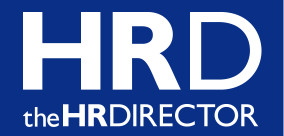 As seen in HR Director
As seen in HR Director
Andrew Heath, CEO, WeThrive, explains why employers need to take an individual approach to understanding employee needs.
Imagine if you went to the doctor, described your symptoms and then left without a prescription. The GP would not be able to provide you with the medicine you needed and your issues would not be addressed. It may seem like a strange analogy, but the way many organisations approach employee engagement is just the same. For years, they have relied on large-scale, anonymous surveys that aim to diagnose issues in the workforce, then apply initiatives across the board without knowing how individual employees feel. Any rise in engagement is as much a question of luck as the impact of the intervention they introduced.
Everyone at work experiences it differently, and this has never been more the case than during the pandemic. In the office, how employees experienced their working day was subject to some control because they were all in the same environment. They’d attend meetings, take breaks at lunch if possible, and if someone was struggling with a particular aspect of their role it was far more visible. With many employees now home-based, and as we move to a more hybrid mix of office and remote working, those individual indicators and rhythms are no longer there. Applying a catch-all engagement strategy is useless at best in this environment, and at worst could risk damaging someone’s mental health or pushing talented employees to leave.
The problem is that the employee engagement industry has based its products and services on anonymity for decades. Surveys treat the workforce as one homogenous blob, whereas humans have innate individual needs that need to be met before they can thrive. So, as a company, an organisation might score badly on how well it communicates, for example. It sees this data and responds with an expensive internal communications programme. But people may have given a low score for any number of reasons: they don’t have enough one-to-ones with their manager; they dislike all-staff town hall meetings; or perhaps they haven’t been briefed properly about what’s expected of them in their role. When it comes to solutions, some employees might need more clarity on what they’re trying to achieve, while others might respond to being given more autonomy. Asking questions anonymously and acting on these results as though everyone feels the same will never drive change.
A survey of customers at WeThrive found that surveys get a 10% increase in participation when they are not anonymous, when individuals know that their feedback will be acted on. We believe that by asking employees at individual and team level about what directly affects their employee experience, it’s possible to diagnose tailored solutions that can really shift the dial on engagement. Rather than asking generic questions about how employees feel about how they are rewarded, for example, drilling down into individual barriers or pain points can drive change from the ground up. Managers can be provided with targeted suggestions and learning tools for that employee (perhaps they need more training on Excel or would benefit from a mentor), while the worker feels more valued and confident to do their job, and therefore more engaged. Multiply that across a whole workforce and those engagement scores start to climb.
Of course, it’s natural that employees may be wary about putting their name to feedback that could be perceived as negative. But by being clear about what the information will be used for, that its aim is to help them to have a better time at work, organisations can build that trust. One approach is to begin with an anonymous survey, but to give managers clear action points and once employees see that there is a positive response, they are more likely to identify themselves. This becomes a virtuous circle where employees have more trust for managers as they feel more supported, and this will become more important ever as we move to hybrid working. A recent piece of research by Durham University Business School and the University of Coimbra in Portugal, for example, found that a strong sense of trust in the management-employee relationship correlated with higher levels of productivity and greater feelings of harmony in the workforce.
The next step is to empower employees to self-diagnose where their engagement issues lie. By asking specific questions about where their barriers are and suggestions of actions that could help them overcome those challenges, employees can begin to see a way forward without being spoon-fed solutions by management. We know that achieving something is never as powerful if someone else does it for us, and if we receive praise for something we’re likely to do it again. One of the revelations of approaching engagement this way is that a lot of things that affect employees’ satisfaction at work are actually quite easy (and cheap) to fix. Sometimes it might just be a question of checking in and asking the right things – something a company-wide survey would struggle to achieve. There is power in knowing your employees and your employees knowing themselves – it’s just a question of grasping that knowledge.
 As seen in
As seen in 

